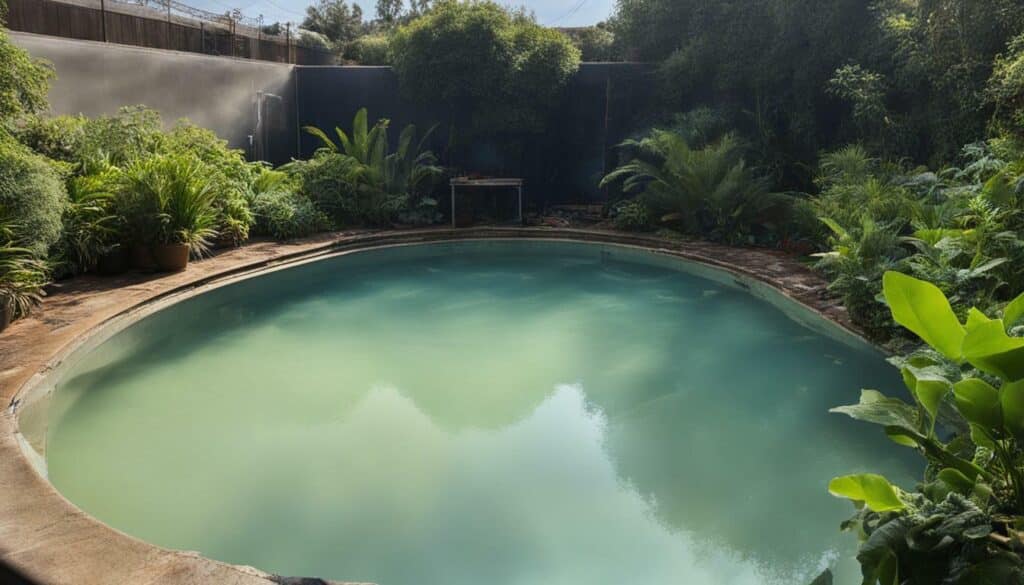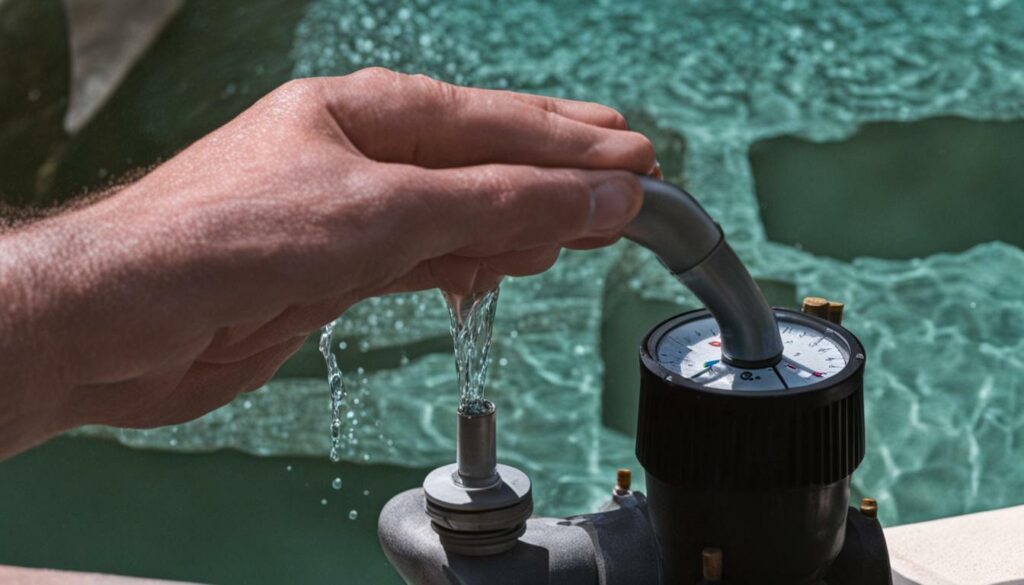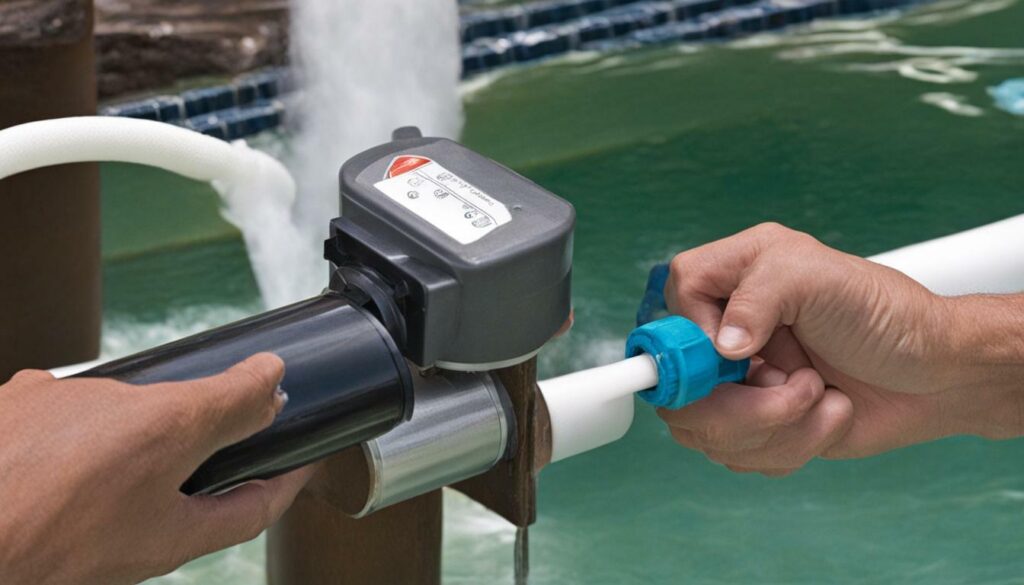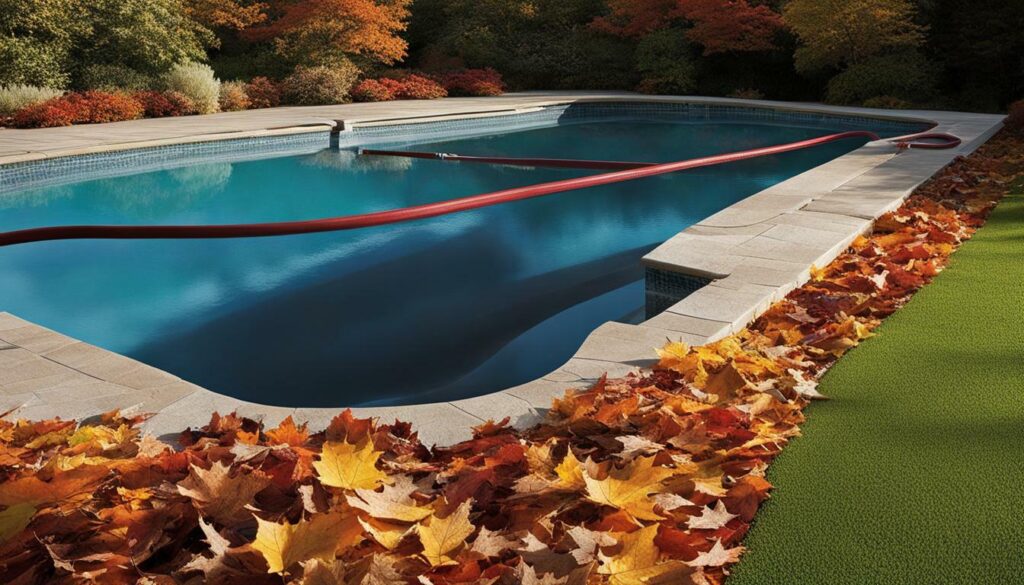
As the hot summer days approach, we all want to enjoy a refreshing swim in our pools. However, a malfunctioning pool pump can quickly put a damper on the fun. That’s why it’s crucial to prime your pool pump to ensure it’s working efficiently and keeping your pool healthy. In this article, we’ll provide a step-by-step guide on how to prime a pool pump and offer tips to keep your pool pump running smoothly. So, let’s dive in!
- Priming a pool pump is essential for maintaining a healthy and functional pool.
- Understanding the pool pump priming process is crucial before diving into priming.
- Maintaining the pool pump prime is necessary for longevity and optimal performance.
- Common issues with pool pump priming can be easily solved with troubleshooting solutions.
- By following our five-step process and using the right tools and equipment, you can prime your pool pump effectively.
Understanding Pool Pump Priming
Before you dive into the pool pump priming process, it’s essential to understand how it works. The priming process involves removing air from the pump and filling the pump with water to create a vacuum, which helps the pump to move water effectively. Here are the basic steps to prime a pool pump:
- Turn off the pool pump to ensure it is not running.
- Close the skimmer valves to prevent air from entering the system.
- Remove the pump lid to allow air to escape from the system.
- Fill the pump with water until it overflows from the pump housing.
- Replace the pump lid and turn on the pump. Once water flows steadily from the pump, open the skimmer valves to allow water to circulate freely through the pump.
Following these steps will help prime your pool pump properly for optimal performance.
Meticulous maintenance of your pool pump priming ensures the pump is always ready for use and prolongs its lifespan. Here are some useful tips to help you maintain pool pump priming.
- Check your pool pump regularly to see if there is any air in the system. Air pockets can cause a loss of prime and reduce performance.
- Keep an eye on your pool water level. If it’s too low, the pump will not work correctly.
- Make sure the pool pump lid O-ring is well lubricated. This prevents air leaks, which can lead to lost prime.
- If you need to replace parts or carry out maintenance, ensure that you use genuine manufacturer parts. That way, you can be sure they are compatible and will not damage your pump.
- Regular cleaning of the pump basket and skimmer basket is essential to prevent blockages and ensure smooth water flow.
Note: These tips will keep your pool pump primed and ready for use. Remember to consult a professional pool technician if you encounter any severe issues or require further maintenance assistance.
“Regular maintenance will keep your pool pump primed and ready for summer fun!”
Common Issues with Pool Pump Priming
While priming a pool pump may seem like a straightforward process, sometimes issues may arise. Below are some common issues with pool pump priming and helpful solutions to troubleshoot any problems that may occur.
Issue #1: Air Leaks
If you notice air bubbles in your pool pump’s strainer basket or low pressure on your filter gauge, you may have an air leak in your system. Common causes of air leaks include loose fittings, worn pump seals, or a cracked pump lid. To fix this issue:
- Check your pump’s lid and O-ring for cracks or damage and replace if necessary.
- Tighten all fittings and connections in your pool pump and filter system.
- Check your pump’s seal plate for cracks and replace if needed.
Issue #2: Clogged Impeller
If your pool pump is not able to generate enough pressure or flow, the impeller may be clogged with debris. To resolve this issue:
- Turn off your pool pump and shut off the power.
- Remove the pump’s strainer basket and use a small tool to clear any debris from the impeller.
- Clean the strainer basket and reassemble the pump.
- Turn the pump back on and check the pressure gauge to ensure proper flow and pressure.
Issue #3: Low Water Levels
If your pool’s water level is too low, your pool pump will not be able to generate enough suction to prime properly. To resolve this issue:
- Check your pool’s water level and add water if it’s too low.
- If your pool has an automatic water-leveling system, ensure it is functioning properly.
- If the water level is still too low, you may need to add more water using a garden hose.
By addressing these common issues, you can ensure that your pool pump priming process goes smoothly and your pool stays healthy and functional.
Priming a pool pump may seem complicated, but it’s a simple process that can be completed in five easy steps. Here’s how:
| Step | Description |
|---|---|
| Step 1 | Turn off the pool pump. This is an important safety precaution. For added safety, unplug the pump or turn off the circuit breaker. |
| Step 2 | Locate the pool pump’s strainer basket and remove any debris or buildup that may be present. Cleaning the basket will improve the pump’s suction and help with priming. |
| Step 3 | Fill the pool pump with water. This step ensures the pump has water to prime and prevents it from running dry, which can cause damage. Fill the pump with water until it reaches the top of the strainer basket. |
| Step 4 | Replace the strainer basket cover and tighten it securely. Be sure to check for any cracks or damage that may cause air leakage. |
| Step 5 | Turn on the pool pump and be patient. It may take a few minutes for the pump to prime, and you may hear air being expelled from the system. Once water starts flowing into the pump, you know it’s primed. |
Now that you know the five-step process, priming your pool pump should be a breeze. Remember, always prioritize safety, and don’t rush the process. Your patience will be rewarded with a healthy and functioning pool pump.
Tools and Equipment for Pool Pump Priming
Before starting the pool pump priming process, it is essential to have the necessary tools and equipment on hand. This will ensure a smooth and efficient priming experience. Here is a list of items you need for pool pump priming:
| Items | Description |
|---|---|
| Pool pump | The pool pump that will be primed. |
| Pool skimmer basket | To remove any debris from the water before it enters the pool pump. |
| Pool filter | To catch any dirt, debris, and other contaminants before the water returns to the pool. |
| Water hose | To fill the pool pump with water. |
| Pool pump lid wrench | To remove and secure the pool pump lid. |
| Teflon tape | To secure the fittings and prevent leaks. |
Make sure to have all the items ready before you start priming the pool pump.
Congratulations! You have successfully primed your pool pump! Now, it’s time to ensure your pump stays primed and functions optimally for an extended period. In this section, we will provide tips and techniques to maintain your pool pump prime for long-lasting performance.
Regular Maintenance
One of the essential steps for maintaining your pool pump prime is to keep your pump clean and free of debris. Be sure to regularly check the pump basket and remove any leaves, twigs, or other debris that may have accumulated. A clean pump basket ensures proper water circulation, which helps maintain the prime.
Additionally, regularly monitor your pool’s water level. A low water level can cause the pump to lose prime, as it may suck in air instead of water. Keep the water level at the correct height to ensure optimal performance.
Prime Retention
After priming your pool pump, it’s essential to keep the prime retention valve closed to maintain the prime. If air gets into the system, it can cause the pump to lose prime, leading to reduced performance. To ensure prime retention, close the valve tightly after priming the pump.
Another way to maintain the prime is to ensure that the pump is always turned off correctly. Never turn off the pump using the main power switch. Instead, switch off the timer or manual control switch first, then turn off the power switch. This step prevents air from entering the system and helps maintain the prime.
Troubleshooting
Despite your best efforts, your pool pump may lose prime at some point. If this happens, don’t panic! Check the pump basket for any debris, and ensure the water level is at the correct height. If the basket is clean and the water level is correct, there may be an air leak in the system. Contact a pool professional to help you identify and fix the issue.
By following the tips and techniques provided in this section, you can maintain your pool pump prime for optimal performance and longevity. Regular maintenance, prime retention, and troubleshooting are essential for ensuring your pump stays primed and ready for endless summer fun!
Priming a Pool Pump for Beginners
Priming a pool pump for the first time can be intimidating, but it doesn’t have to be. With this beginner-friendly guide, you’ll be able to prime your pool pump like a pro in no time.
First, it’s essential to understand the purpose of priming a pool pump. Priming means removing any air trapped in the pump and plumbing, allowing water to flow through freely. This ensures the pump is working efficiently and prevents damage to the motor.
Step 1: Gather the Tools
Before you begin, ensure you have the necessary tools and equipment. You’ll need a bucket, a garden hose, and a pool hose. It’s also helpful to have a lubricant and a new o-ring on hand.
Always turn off the pool pump before priming to prevent any accidents. This is a crucial safety step.
Step 3: Locate the Pool Pump Basket
Locate the pool pump basket and remove the lid. Check for any debris, and clear it out if necessary. Also, check the lid’s o-ring and lubricate it with a lubricant.
Step 4: Add Water to the Pool Pump
Fill the pool pump with water using a bucket or a garden hose. Pour water into the pool pump until the basket is full.
Step 5: Restart the Pool Pump
Replace the lid and ensure it’s securely in place. Reconnect the pool hose and turn on the pool pump. Watch for any air bubbles in the pool hose, and continue filling the pool pump with water until the bubbles disappear.
Congratulations, you’ve successfully primed your pool pump! With these simple steps, you’ll be ready to enjoy your sparkling clean pool all summer long.
Conclusion
Priming a pool pump may seem overwhelming, but with the right tools and techniques, it can be a breeze. By following the step-by-step guide provided in this article, you can keep your pool pump primed and ready for endless summer fun.
It’s important to understand the pool pump priming process and to be aware of common issues that may arise. By troubleshooting these issues and maintaining the prime, you can ensure your pool pump’s longevity and optimal functionality.
Whether you’re new to pool maintenance or a seasoned pro, priming a pool pump is a crucial step in keeping your pool healthy and functional. Take advantage of the tips and techniques provided in this article to make priming your pool pump a simple and stress-free process.
So, go ahead and give your pool pump the attention it deserves. Your pool will thank you for it with a summer full of refreshing swims and fun memories.
FAQ
Q: What is the process of priming a pool pump?
A: Priming a pool pump involves removing any air trapped in the pump and filling it with water to create suction. This ensures proper circulation and filtration of pool water. We will guide you through the step-by-step process to make priming a breeze.
Q: Why is understanding pool pump priming important?
A: Understanding the pool pump priming process is essential to ensure successful priming and maintain optimal pool performance. By grasping the concept, you’ll be better equipped to troubleshoot any issues that may arise during the priming process.
Q: What are some tips for pool pump priming?
A: To make priming your pool pump easier, consider the following tips: 1) Ensure the pool water level is adequate, 2) Close all air relief valves, 3) Use a garden hose to fill the pump with water, 4) Check for any leaks or blockages in the system, and 5) Consult the manufacturer’s instructions for specific priming guidelines.
Q: What are common issues with pool pump priming?
A: Some common issues encountered during pool pump priming include air leaks, clogged impellers, insufficient water levels, and priming loss due to power outages. We will discuss these issues in detail and provide troubleshooting solutions to help you overcome them.
Q: What is the five-step process to prime a pool pump?
A: The five-step process to prime a pool pump includes: 1) Closing all air relief valves, 2) Filling the pump with water using a garden hose, 3) Opening the pump lid and ensuring the basket is clean and in place, 4) Turning on the pump and letting it run until it primes, and 5) Checking for any leaks or abnormal noises once primed.
Q: What tools and equipment are needed for pool pump priming?
A: To ensure a smooth priming experience, gather the following tools and equipment: 1) Garden hose with a nozzle, 2) Screwdriver or wrench for pump lid removal, 3) Towel or cloth for cleaning, and 4) Teflon tape for sealing any potential leaks.
Q: How can I maintain the priming of my pool pump for longevity?
A: To maintain the prime of your pool pump for long-lasting performance, regularly check for leaks, clean the pump basket, maintain proper water levels, and schedule routine inspections and maintenance. Following these steps will help ensure your pool pump stays primed and functioning optimally.
Q: Can you provide simplified steps for priming a pool pump for beginners?
A: Absolutely! For beginners, follow these simplified steps to prime a pool pump: 1) Close all air relief valves, 2) Fill the pump with water using a garden hose, 3) Make sure the pump lid is securely closed, 4) Turn on the pump and wait for it to prime, and 5) Check for any leaks or unusual sounds once the pump is running smoothly.













